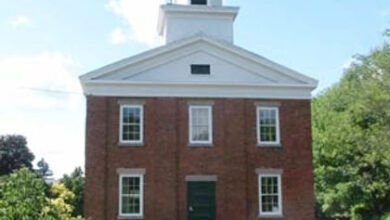Local soldiers played crucial roles in Little Round Top battle
Your readers may be interested in a follow-up to the caption for the Little Round Top photo in the article on Ron Zorn (July 15, 2012). The 140th New York Volunteer Infantry, recruited largely in Monroe County, was marching along the backside of Little Round Top toward its assigned position on the second day at Gettysburg when a general from another unit countermanded their orders and sent them over Little Round Top, as two Texas regiments were coming up the other side. Whoever occupied Little Round Top during the battle the next day would have a great advantage. The 140th wheeled and mounted the hill, Companies A and G in the lead. Of the 161 members of Company A, 49 were from Clarkson, 28 from the Town of Sweden, 17 from Brockport, and three from Hamlin. Most of the rest were transfers from the 44th New York Volunteer Infantry or had been recruited in Niagara County.
They had changed course so abruptly that they neglected to load their rifles or fix their bayonets. As they came over the top, their sudden appearance startled the Texans who were unaware that they were not prepared for battle. In some confusion, the Yanks loaded up, fixed their bayonets, and fell into battle formation. Their commander, Col. Patrick O’Rorke, was shot dead at the beginning of the battle and the leadership fell to Lt. Porter Farley and the head of Company A, Milo Starks, a farm boy from the Town of Sweden. Starks was shot four times, but refused to leave the field of battle. The 140th drove back the Texans.
The other end of Little Round Top was being held by a beleaguered 20th Maine and in the middle was the undermanned 16th Michigan regiment. Except for the timely arrival of the 140th, they might well have been out-flanked by the Texans and unable to hold their positions. It may well be that Little Round Top was saved for the Union and tipped the balance in the crucial battle the next day.



